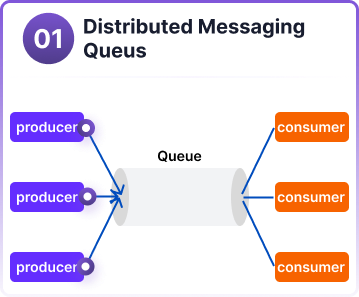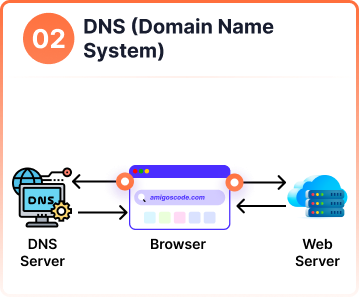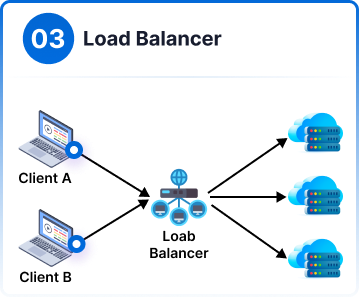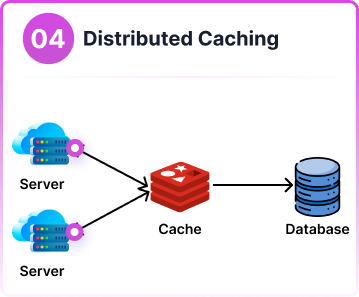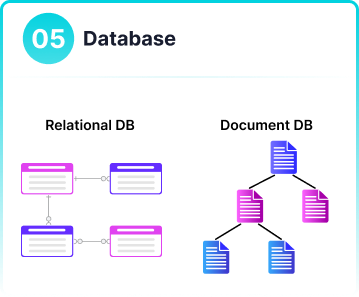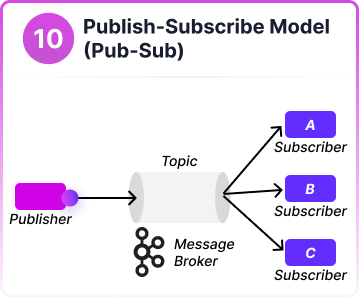Top System Design Building Blocks
System design is a crucial aspect of software development, focusing on the architecture and integration of various components to ensure scalability, reliability, and efficiency.
In this post, we explore the top 12 building blocks of system design that every developer and architect should be familiar with.

1. Distributed Messaging Queues
A distributed messaging queue facilitates communication between different parts of a system by providing a reliable message broker that handles the exchange of information. Producers send messages to the queue, which are then consumed by various consumers, ensuring decoupled and scalable communication.
2. DNS (Domain Name System)
The DNS translates human-readable domain names (like www.example.com) into IP addresses that computers use to identify each other on the network. This process is crucial for routing traffic to the correct servers and ensuring that web services are accessible to users.
3. Load Balancer
Load balancers distribute incoming network traffic across multiple servers to ensure no single server becomes overwhelmed. This component enhances the reliability and efficiency of applications by balancing the load and improving redundancy.
4. Distributed Caching
Distributed caching stores frequently accessed data in memory, reducing the load on databases and speeding up response times. By caching data close to the client or the server, applications can handle higher loads and deliver content more quickly.
5. Database
Databases store and manage data for applications. They come in two primary forms: relational databases, which organize data into tables with predefined schemas, and document databases, which store data in flexible, JSON-like documents. Both types play crucial roles in different scenarios, depending on the nature of the data and the requirements of the application.
6. Distributed Task Scheduler
A distributed task scheduler manages the execution of tasks across multiple servers. It ensures tasks are executed efficiently and reliably, even in the face of server failures. This component is vital for applications that require regular and reliable task execution.
7. Observability
Observability refers to the ability to measure the internal state of a system by examining its outputs. It encompasses monitoring, logging, and tracing to provide a comprehensive view of system performance and health, enabling quick detection and resolution of issues.
8. Unstructured Data Storage
Unstructured data storage solutions, like BLOB stores, are designed to handle large amounts of unstructured data such as multimedia files, documents, and logs. These systems provide scalable and cost-effective storage options for data that doesn't fit neatly into a traditional database.
9. Scaling Services
Scaling services ensure that an application can handle increased load by adding resources dynamically. This can involve scaling up (adding more power to existing servers) or scaling out (adding more servers). Proper scaling ensures that applications remain responsive and reliable under varying loads.
10. Publish-Subscribe Model (Pub-Sub)
The Pub-Sub model allows for asynchronous communication between services. Publishers send messages to topics without knowledge of the subscribers. Subscribers receive messages from topics they are interested in, allowing for flexible and decoupled communication.
11. Unique ID Generator
Unique ID generators provide unique identifiers for entities within a system. These IDs are crucial for maintaining the integrity and consistency of data, especially in distributed systems where conflicts can arise if IDs are not unique.
12. Rate-Limiting
Rate-limiting controls the rate at which clients can make requests to a server. This protects the system from abuse, ensures fair usage, and maintains performance levels by preventing any single client from overwhelming the server.
Understanding these fundamental building blocks is essential for designing robust, scalable, and efficient systems.
Whether you're building a new application or scaling an existing one, incorporating these components will help ensure your system meets the demands of modern usage.
Stay tuned for more in-depth discussions on each of these building blocks and how they can be implemented effectively in your projects.
